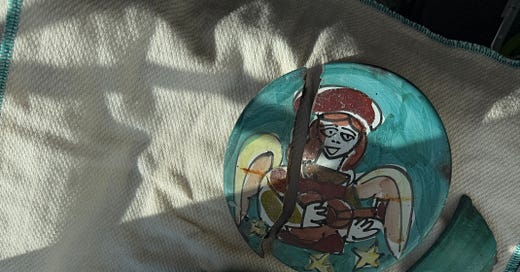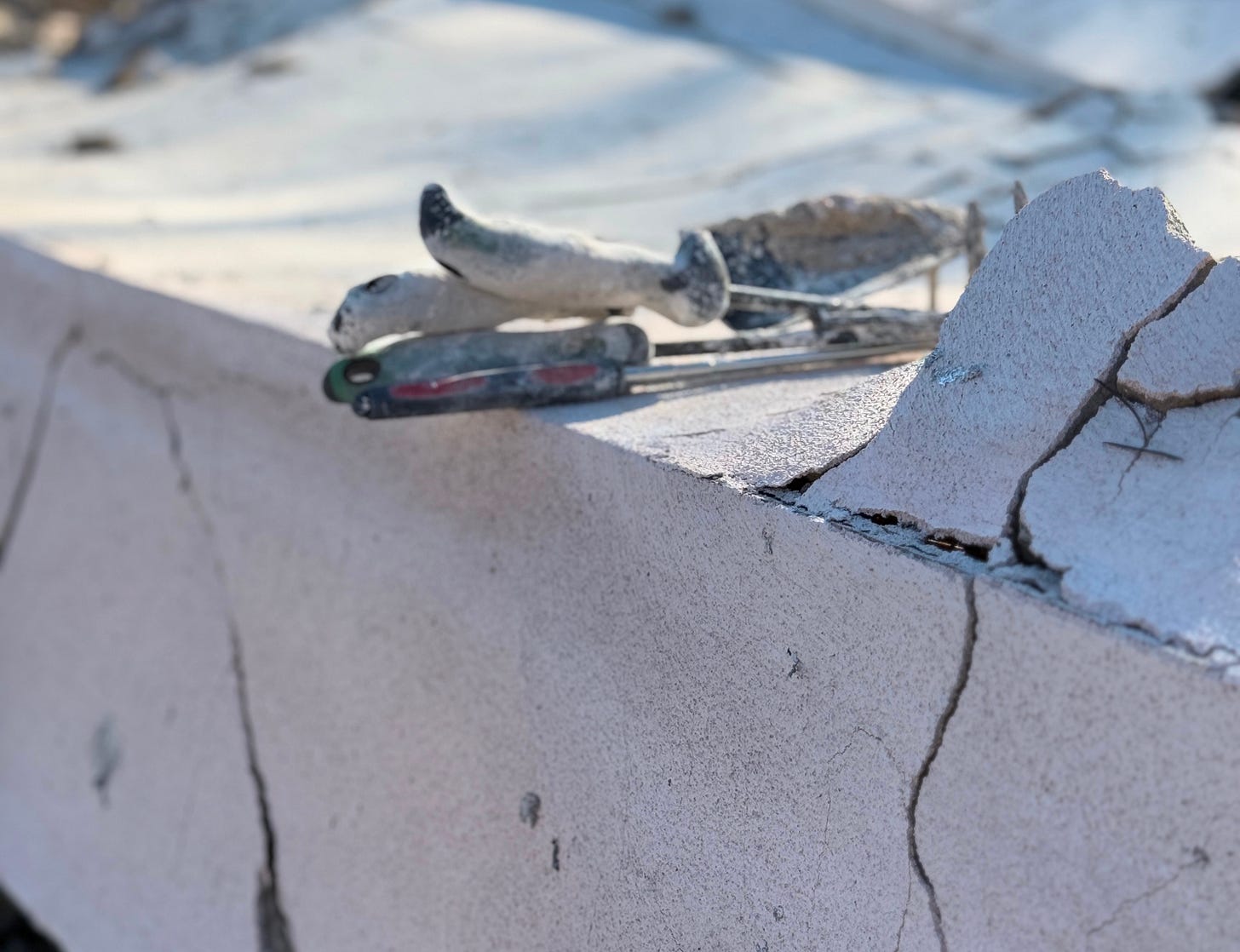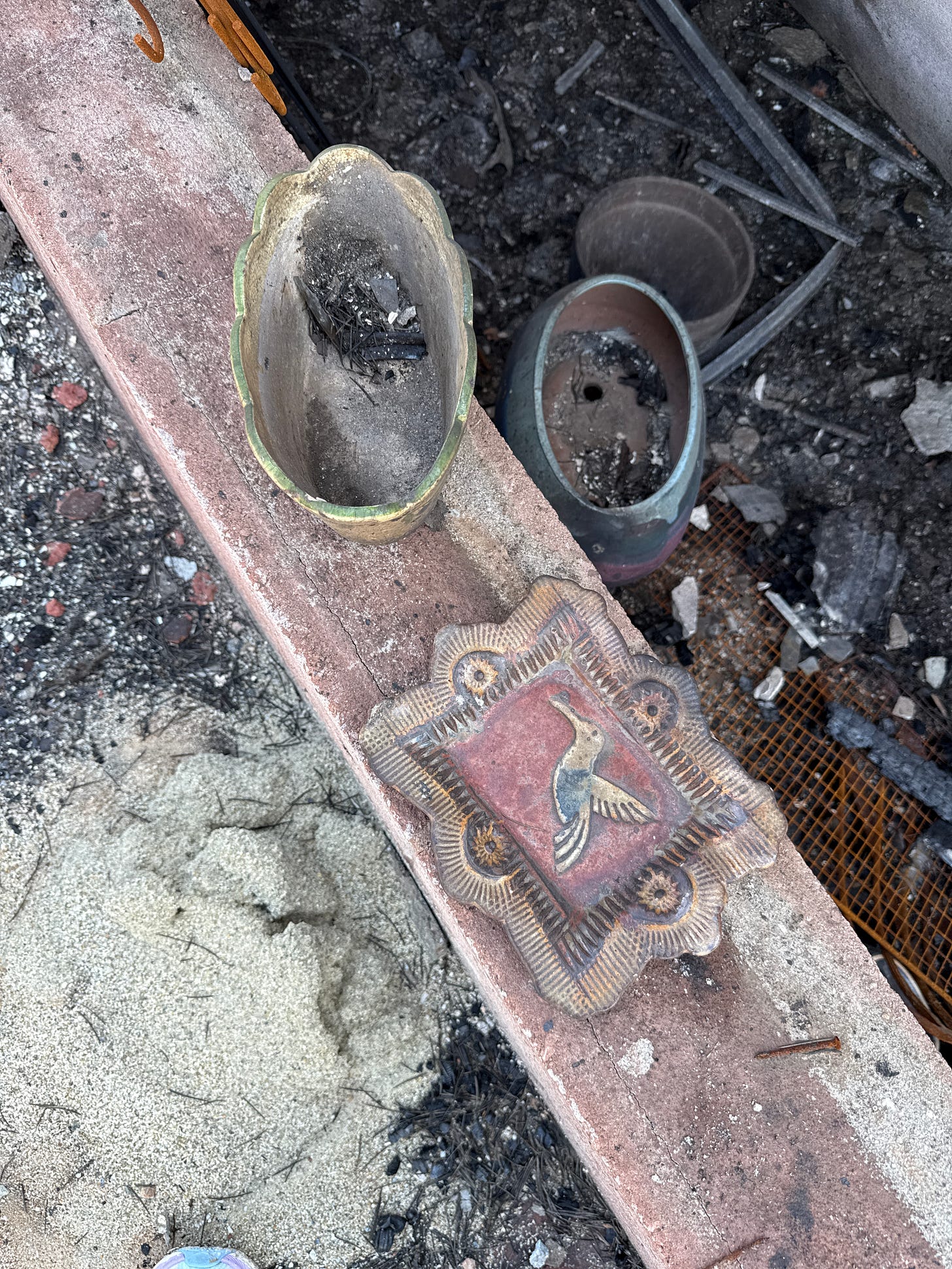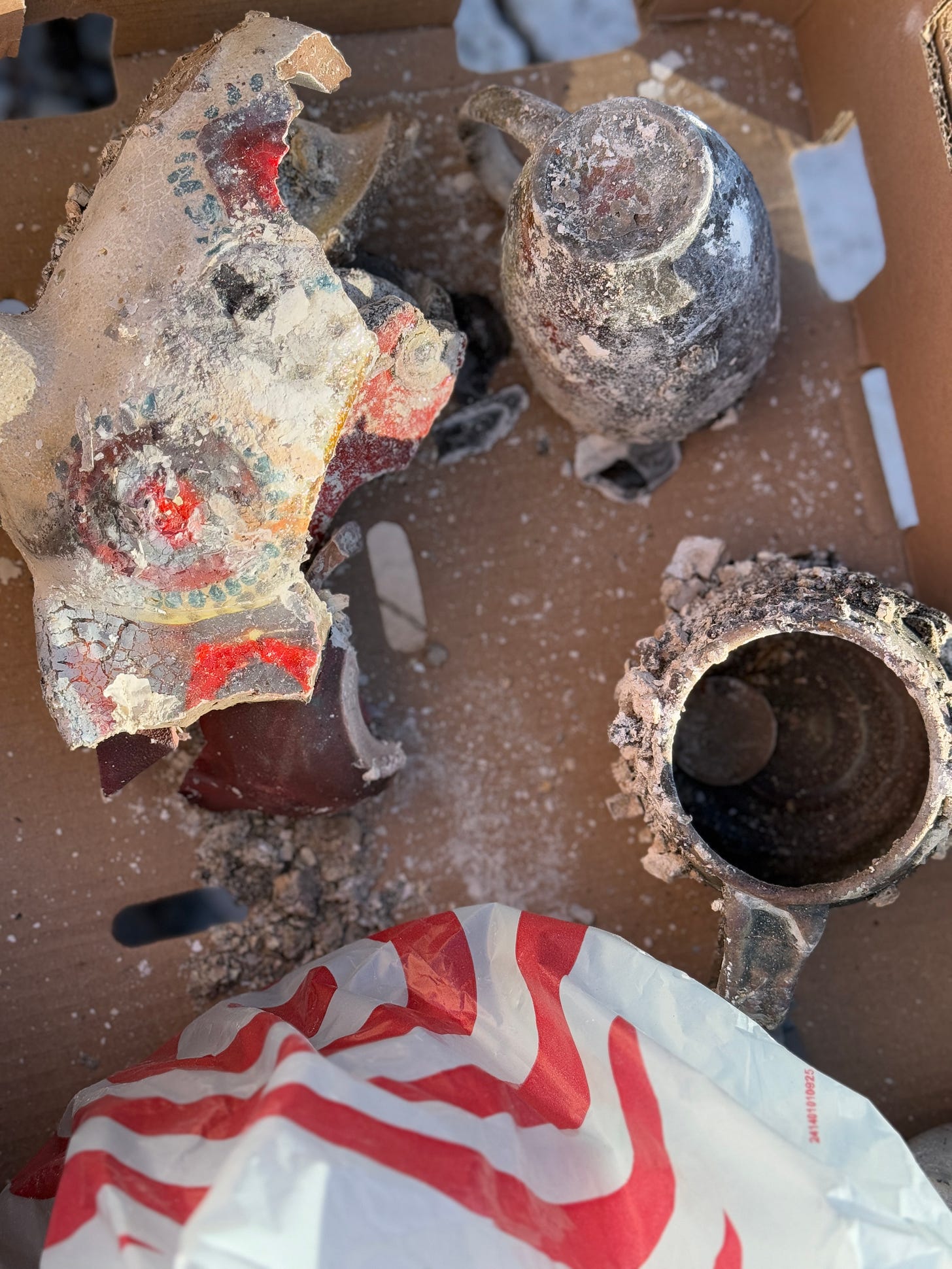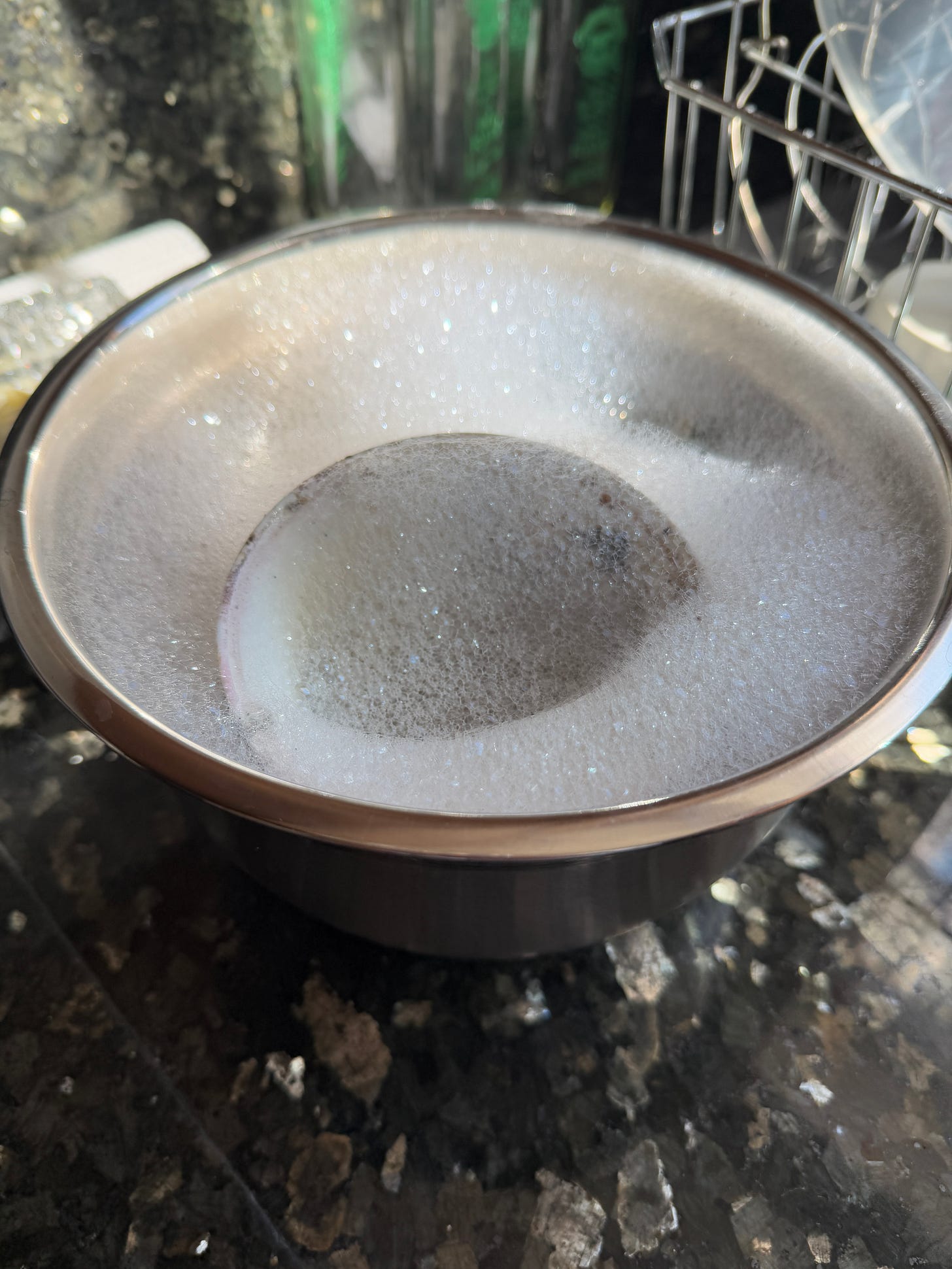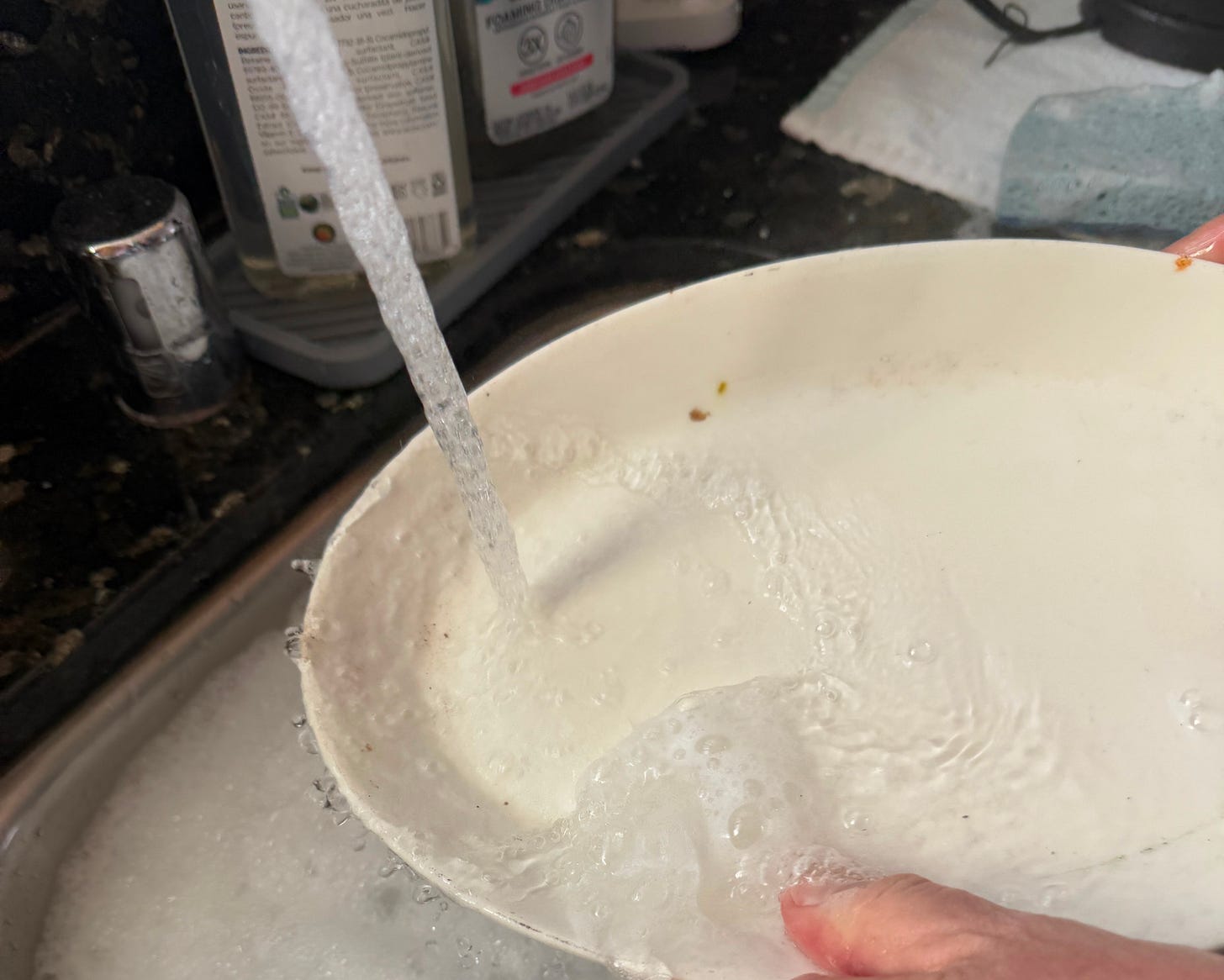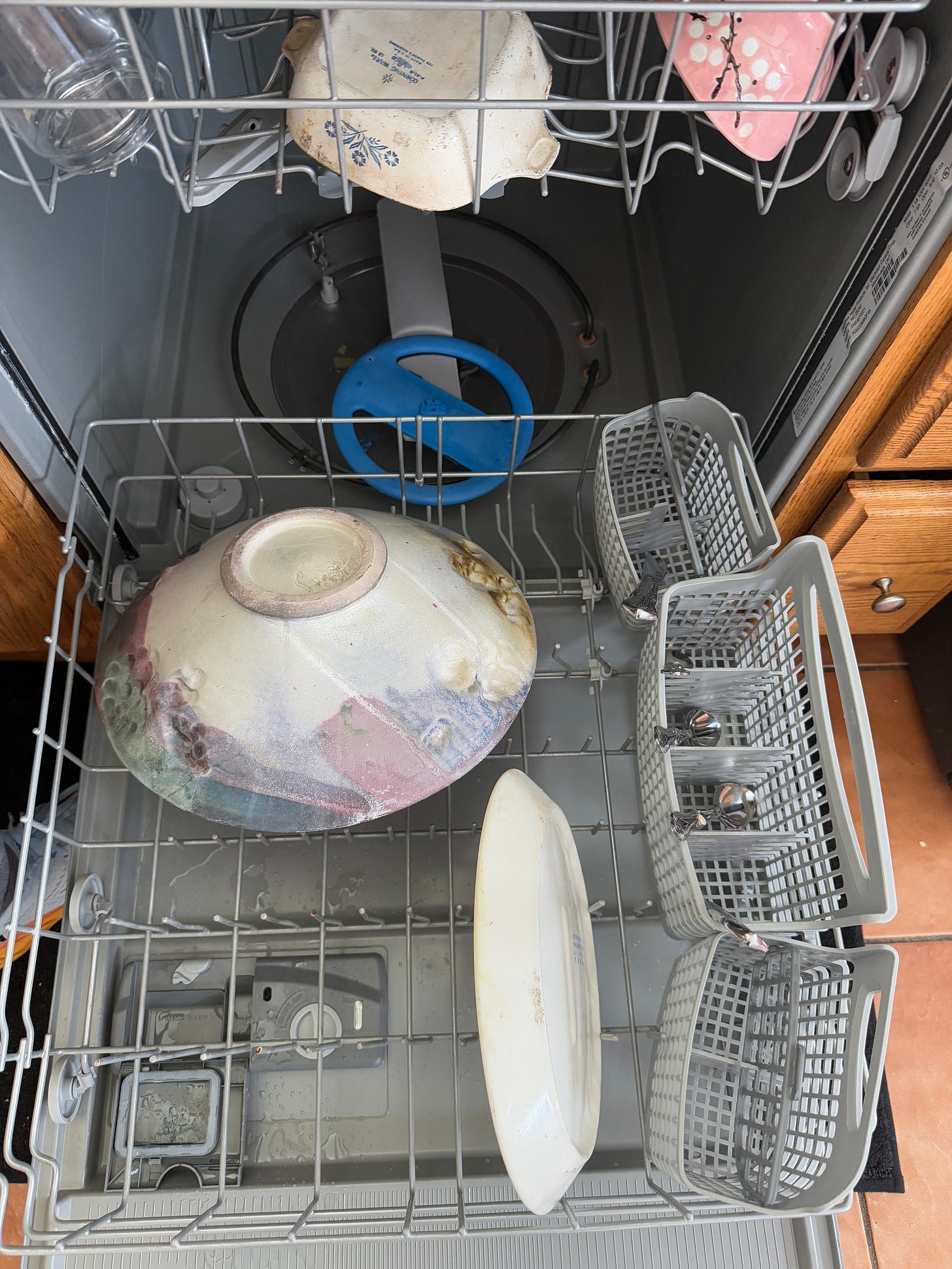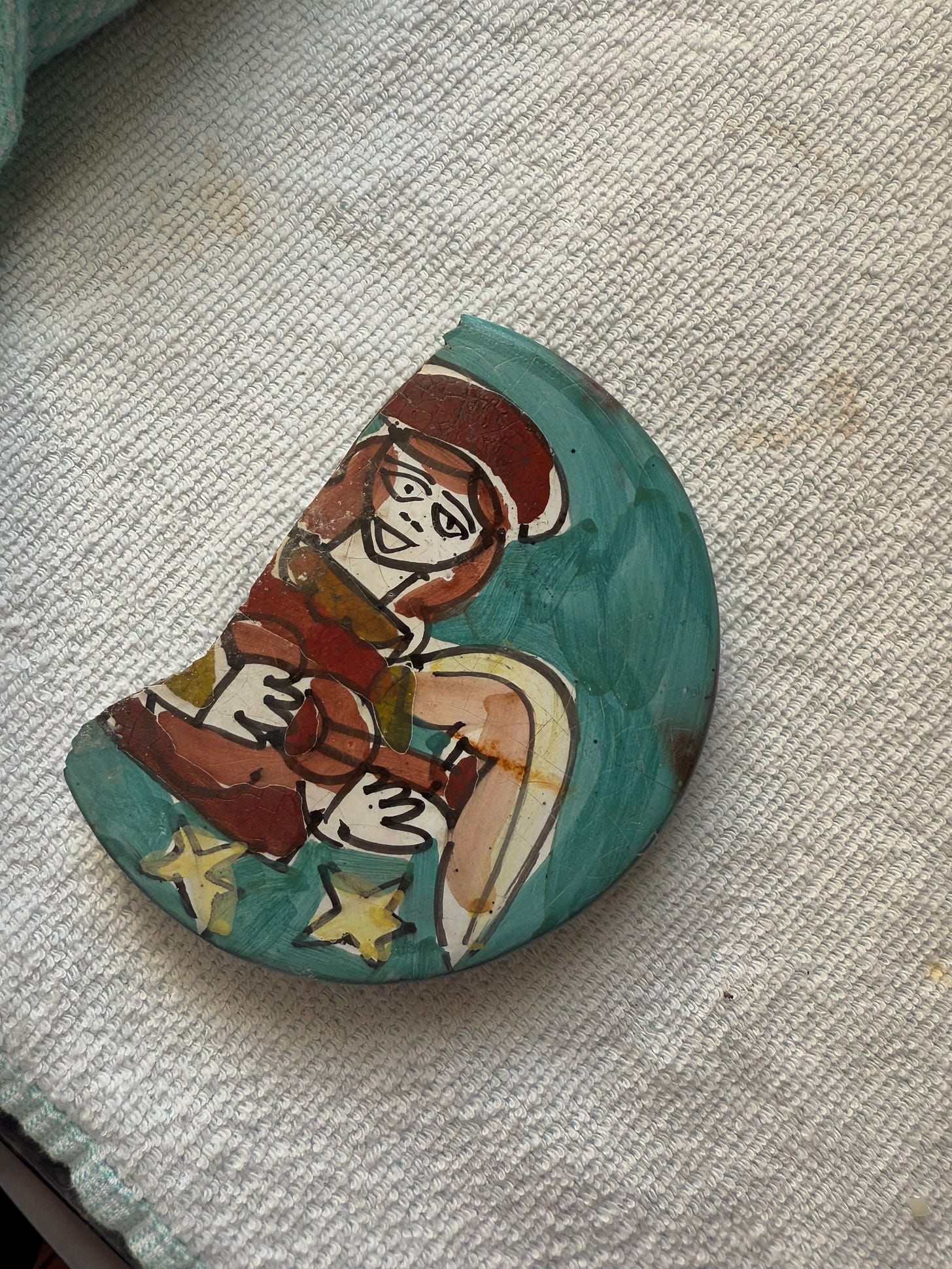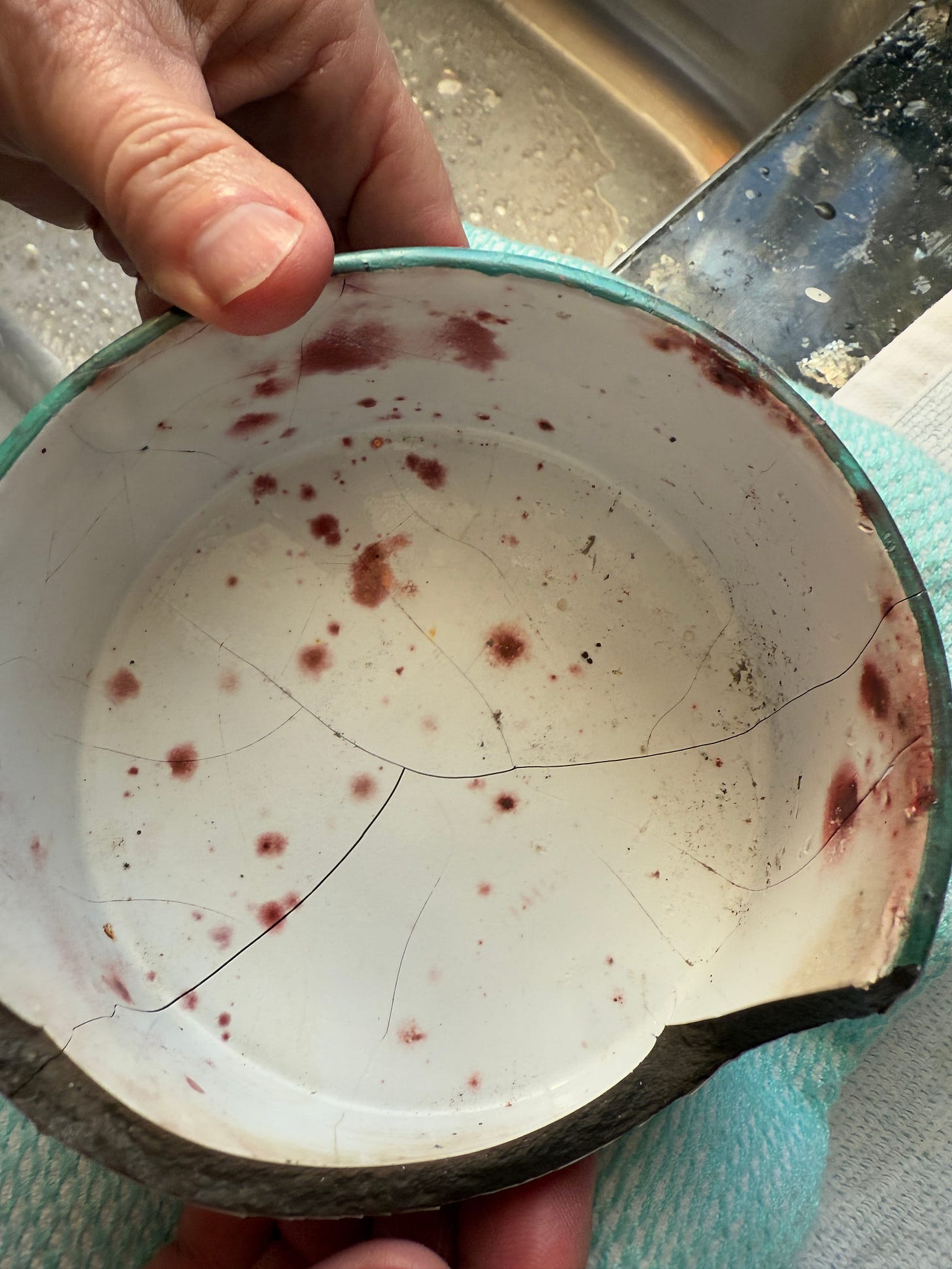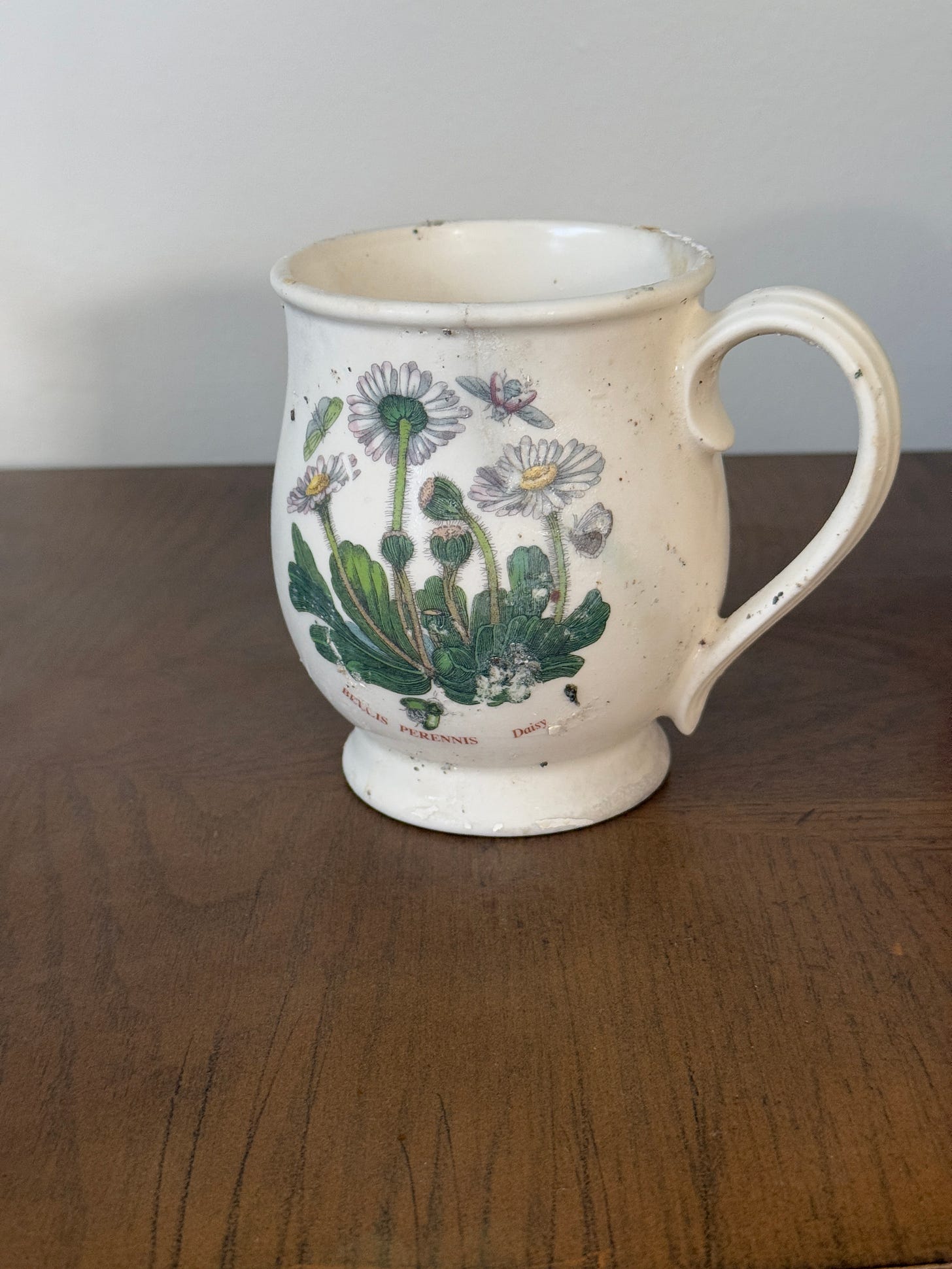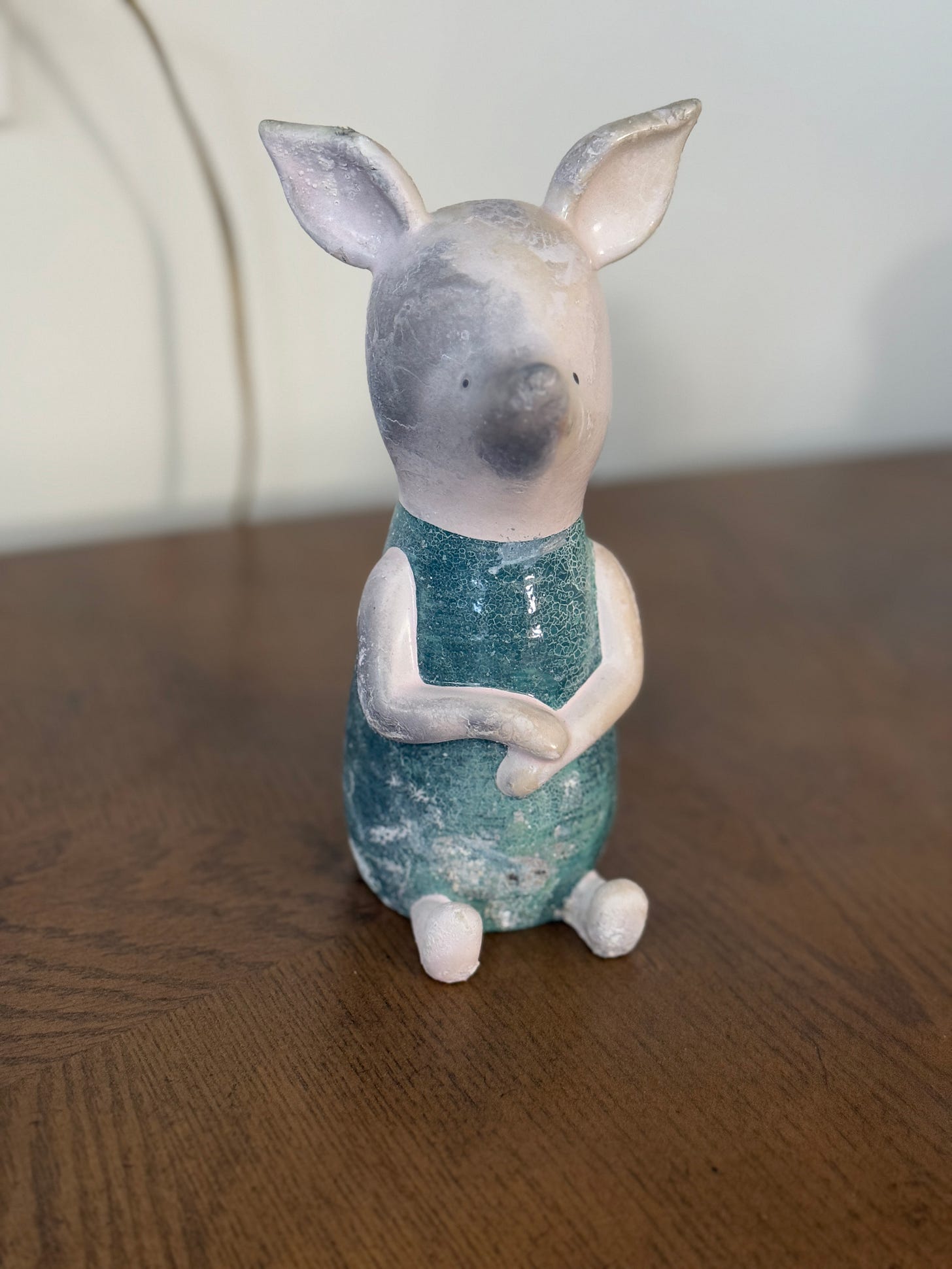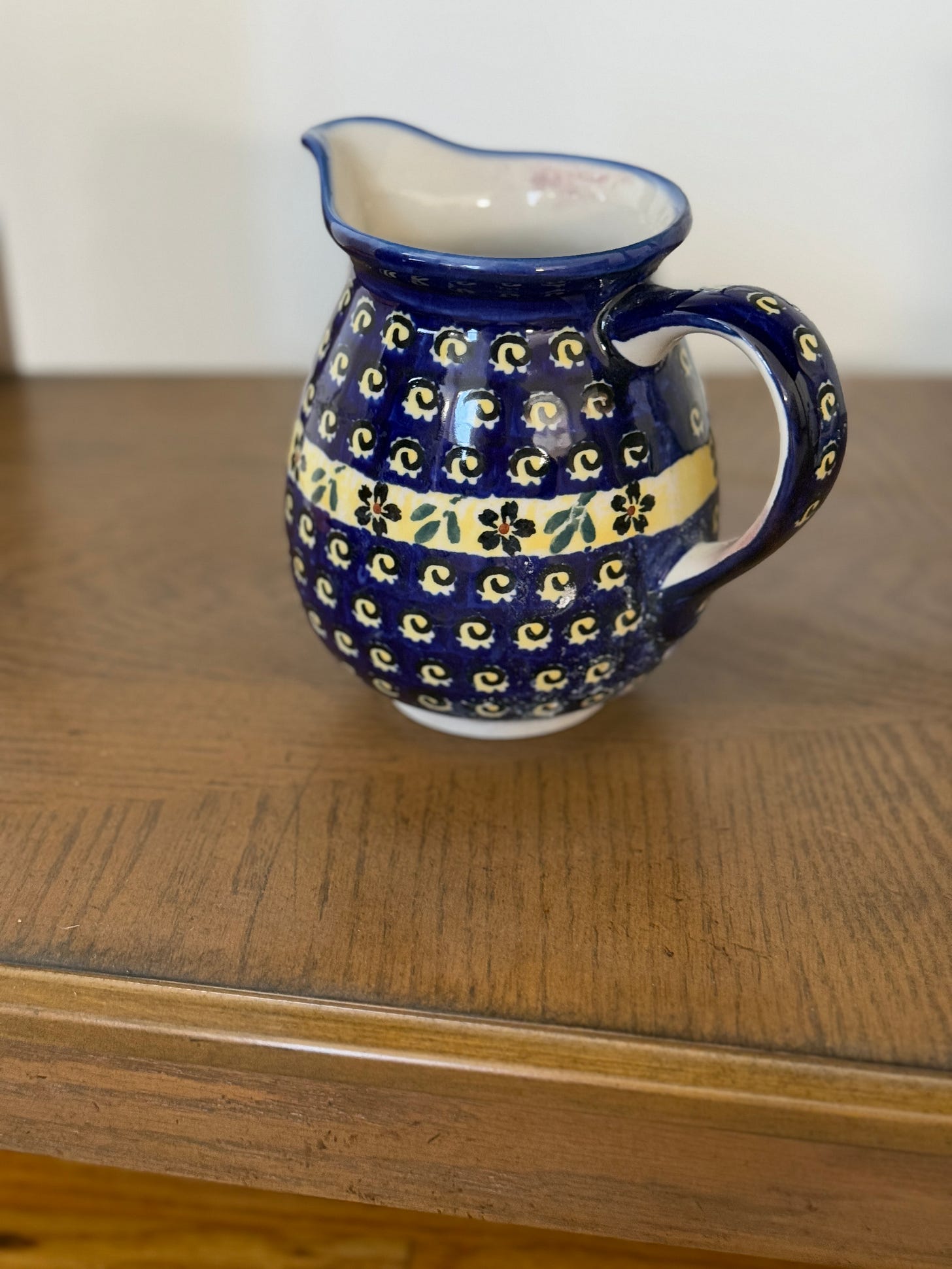Artifacts from the LA Wildfires
how to be the archaeologist of your own life, and best practices for conserving burned objects
Welcome to this week’s edition of Reading Art!
Over the past couple of weeks, I’ve been visiting the place where my parents’ house used to be before it was burned down in the LA wildfires, helping them look for any surviving things—an activity I’ve taken to calling “excavating” for “artifacts,” the everyday treasures of real life.
More survived than you would think, which seems like a miracle in the face of such utter destruction.
I’ve never been on an archaeological dig, but we gathered some tools to aid in the search and went to work, digging through the layers to take us from the top story down to the bottom. Sometimes we could tell immediately what we were looking at, and sometimes it was not so clear, like when we hit a hard surface we eventually realized was the wood floor of the family room.
In some cases, like the backyard, it was easy to find things completely unscathed, like this little hummingbird dish that was a Mother’s Day present circa 2007:
In other cases, we pulled things up from the ground itself, a job made more difficult by the recent rains in LA, which made the rubble into a thick, cement-like substance.
On the left is a fragment of a piece of Sicilian pottery that was one of my dad’s favorite things he owned. On the right are two mugs, mostly intact, and all three are covered in ash and debris.
We actually amassed quite a lot of things, far beyond what I could include here in this post. Any pottery that was fired at a very hot temperature to begin with, like terracotta, tended to do very well. In other instances, it seems to have been a matter of how the object fell once the walls started collapsing in. For example, sometimes objects were at the top of a pile and “rode” their way down in relative safety, or were shielded by other falling objects that broke around them and thus bore the brunt of the impact.
Once we gathered up everything that was salvageable, we started our own process of conservation.
Here’s what we did (NOTE: keep reading—this was not the best practice):
Gently rinse the item and try to remove as much cement-like substance as possible
Use a gentle cleanser to soak the item overnight
Put it in the dishwasher, if it was a hardier sort of artifact. If not, let it dry in the sun and let it be
As you can see in the picture above, sometimes things didn’t break at all, like the large decorative dish in the upper left or the smaller cream serving platter in the lower right (big shoutout to H.F. Coors Inglewood).
Sometimes, things did break, but we managed to find all/most the pieces, like this little dish from De Simone featuring an angel with a guitar/lyre/ukulele that my dad bought decades ago:
It sustained some discoloring on the inside, but once you put the fragments together, it’s practically whole again:
Here’s some of the other treasures we uncovered.
My mom’s favorite Portmeiron coffee cup, now a rarity:
A figurine of Piglet, given to me and my sister when we were born:
A small pitcher, whose matching baker was cracked in half around it:
The handmade seashell dish, seen above in the washing machine:
We also found a lot of other fragments and ephemera that feel fairly random in some ways, and seem to bear the touch of fate in others: burned-out watch cases (time suspended indefinitely); the remnants of a scrapbook, nearly unrecognizable (its memories taken back from the page), which turned to ash when we picked it up; a silver pendent that seems to have been kicking around in a dresser somewhere that I had never seen before, reading MY GUARDIAN ANGEL PROTECTS ME.
You really do learn something new every day. As it turns out, our natural instincts to save these pieces did not lead us to use the best practices for conserving burned objects. Here’s what you should do, according to the brilliant Vanessa Muros of UCLA’s Cotsen Institute of Archaeology:
Vacuum off any ash—you actually want to avoid water early on, which can drive the ash particles into the surface of the object
Dry clean with an eraser or a sponge (soot cleaning sponges available on Amazon)
If the object hasn’t come clean at this point, it’s not just ash, but something oily still stuck on it. At this stage, use a gentle detergent like Dawn soap
For gluing pieces back together, use Paraloid B72
For special artifacts, consider employing a professional conservator
This was all so interesting to learn about, especially as a PhD candidate in philosophy whose work has focused more on the historical and philological as opposed to the archaeological. It’s been a lot of fun to start applying these guidelines in real time, on our own stuff; the glue is already on its way, so maybe we can fix things like the De Simone angel dish and some of the other things we found.
The whole experience has taught me even more about the value of everyday objects, which has been a recurring theme on Reading Art these last few weeks, and how worthwhile it is to save and conserve them, even if they’re broken. In fact, these pieces mean more now to me in their flawed and “damaged” state, a sign of all that they endured to make their way back to us. I don’t think of these things as mere fragments of a lost whole; instead, there is even greater evidence of the lives these objects have lived.
Thank you for reading this week’s newsletter!
In a broader sense, I have a renewed sense of awe for all that archaeologists and conservators do to make antiquity come alive for us in the modern day, and how incredible it is that anything survives after thousands of years. And, on a personal note, my family now has its own personal little museum of things from a former life—a collection whose very existence, while bittersweet, is so much more uplifting than I could ever have anticipated.
Take care until next time.
MKA

